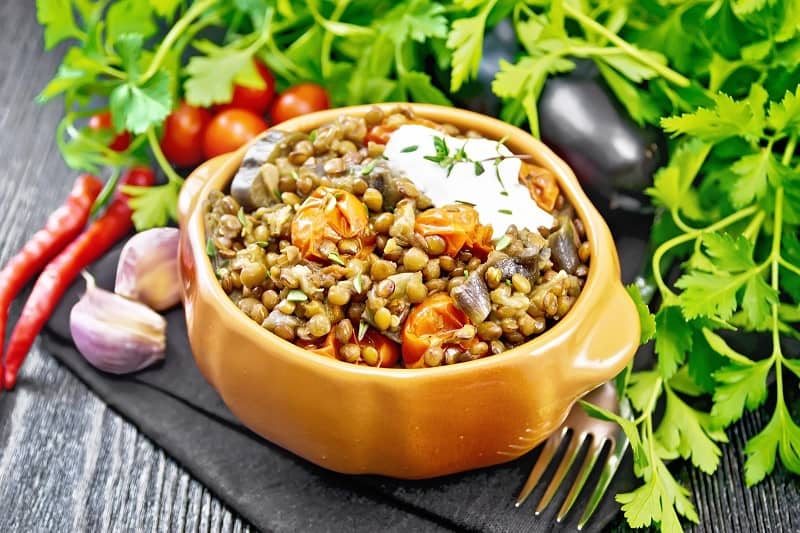Getting a recipe with lentils just right is often quite hard for some, especially those who haven’t cooked with them on a regular basis before.
A lentil might not look like much, but the small, flat, seed-like legume has a rather unique ability of being able to soak up a great deal of water during the cooking process, without the need to soak them first.
Because of this, the cooked weight and size of your lentils can vary massively from your raw or dry weight.
How Big Do Lentils Get When You Cook Them?
Lentils, although small at first, will soak up any of the fluid they’re cooked in. They can grow up to double their raw or dry size, although this does depend on a wide number of factors. This includes cooking time, the type or variety of lentil used, and what you’re cooking them in.
Dry to Cooked Weight Conversion Guide for Lentils
Some varieties can produce up to three cups of cooked lentils for one cup of dry or raw lentils. There are more than fifty different types grown in India alone, although the majority of people are only really familiar with three main types – orange/red, brown and green lentils.
As a general rule, most lentil varieties swell up to at least double their original or dry size when cooked, due to the absorption of cooking fluids.
You should bear this in mind when cooking or preparing. Make note of what the recipe calls for – dry or cooked lentils.
Here is a rough guide to converting the weight of lentils from dry to cooked and vice versa:
- 125 g of dry lentils = 250 g cooked
- 200 g of dry lentils = 400 g cooked
- 250 g of dry lentils = 500 g cooked
- ¼ cup of dry lentils = ½ cup cooked
- ½ cup of dry lentils = 1 cup cooked

What Is the Recommended Portion Size of Lentils Per Person?
According to BUPA UK, a recommended portion size of lentils per person is four tablespoons, which equates to 60 g or 2 oz. This recommendation would apply to COOKED lentils, not raw lentils.
In terms of RAW or DRY lentils, the recommended portion size would be approximately two tablespoons, depending on the variety. This I about 30 g. It works out to around half the cooked amount. The individual seeds, when they absorb water and swell up, usually fill out to around double the dry mass.
Most recipes call for approximately one-quarter of a cup of cooked lentils per person, which equates to 30 g or 1 oz of raw/dry lentils.
If you take a quick peek at the serving recommendation on a packet of lentils, it usually states something like, “Serving size ½ cup cooked,” or words to that effect. When that is converted into grams or ounces, it amounts to roughly 60 to 65 g, or around 2 oz.
How to Use Up Lentils When You’ve Cooked Too Much
If you’ve accidentally found yourself with a lot of lentils left over because you miscalculated how much you’d need (which we’ve all done once or twice!), you have a few options open to you.
1. Store cooked lentils in the fridge
When stored in an airtight container, lentils will last for up to a week in the fridge. Be wary not to overcook them, however. Lentils tend to turn into a mush-like consistency when they are cooked and then reheated/overcooked.
2. Freeze cooked lentils
If you transfer the cooked lentils to an airtight container or Ziplock-style freezer bag, you can store them in freezer for three to six months. Make sure you make a note of the date of freezing on the container or bag.
3. Use leftover cooked lentils as a meat substitute
Lentils pack a real punch when it comes to protein and complex carbohydrate content, which means they can easily take the place of whatever meat product you were going to have on your plate for dinner.

Kim is a writer with more than a decade of experience, and a food enthusiast. When she’s not spending her time writing about her favourite dishes, you can find her in the cake aisle of her local supermarket, or making a mess in the kitchen.



